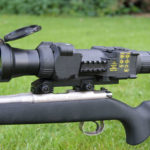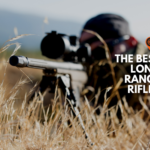
One can adjust a scope up, down, right or even left; they’re basically adjustments for windage and elevation. Consequently, scopes have both elevation and windage turrets. The upper turret makes windage adjustments (right-left adjustments) while turret at the side makes elevation adjustments (up-down adjustments) of the scope. Adjusting the two turrets makes you sight your scope in. sighting simply means that when the crosshairs of the scope are placed on a particular target, your shot will accurately hit the aimed target. Below is a step-by-step guide to sighting your scope.
First, you’ll need to learn how to appropriately boresight a gun so that you can mount it correctly. When boresighting, you’ll need to use both the barrel of the rifle and the scope to focus on a fixed object. You can try alternating your viewpoint between two lines of sight and make certain that the viewpoint is the same. All along, ensure that your gun does not move. Otherwise, you’ll have a wrong alignment. Once set, try firing a few practice rounds. Shooting in a tightly focused pattern should tell you how accurate you were with the boresight.
From this, one can do more fine-tuned adjustments on the scope using the adjustment turrets. Alternatively, you can use another method to make the scope adjustments. Place a ruler on the sheet and run the upper edge of the straight ruler through the mid-point of the bull’s eye in a horizontal manner. Measure the distance from the right side to the core of the bull’s eye and mark the upper and lower side of the sheet. Later, draw a straight line to join the two points and have your elevation cue. Similarly, place the ruler against the drawn line and determine the measurement from the upper side of the sheet to the center. A similar procedure applies in marking and drawing a line that crosses the elevation cue to give a windage cue.
After that, you can probably give yourself a 100-yard firing range and set your paper as the target. Aim and fire three shots into your sheet.With a ruler, measure the elevation and windage cue and record both measurements. From here, you should read the marks on your scope. With each click on the turret, you’ll either move your shot ¼ of a minute. This directly translates to ¼ of an inch in either direction. For instance, if your shot went up 2 inches above the elevation cue, you should turn the upper turret to have 8 clicks in a clockwise direction.
You need to work on your operation on the focus knob to ensure you can do quick and fluid adjustments once on the field. Fortunately, many modern scopes are now featuring automatic and sped focus feature. Either way, you’ll still need to familiarize yourself with how they work in making more accurate shots. You’ll also need to understand how the crosshairs of the scope help in making more accurate shots. As mentioned earlier, the scope technology is advancing. You’ll love the scope whose crosshairs can help you estimate wind direction and bullet drop. What’s more, some feature illuminated bull’s eyes or laser guides that enhance your accuracy levels.
Once you’ve made the fine adjustments, it’s imperative to fire and confirm it. Should the group hit the target, you’re done! Well, a good scope should hold your adjustments for a long time; they should definitely take you through the hunting season. However, you ought to ensure you’ll not drop your rifle and damage your scope. Keep in mind; after firing, lead fragments come back at high speed. Consequently, you might want to invest in nice safety glasses to put on all through the hunting season. Otherwise, you might be hit by pellet fragments even if you’re shooting at the recommended range of 10 feet.








